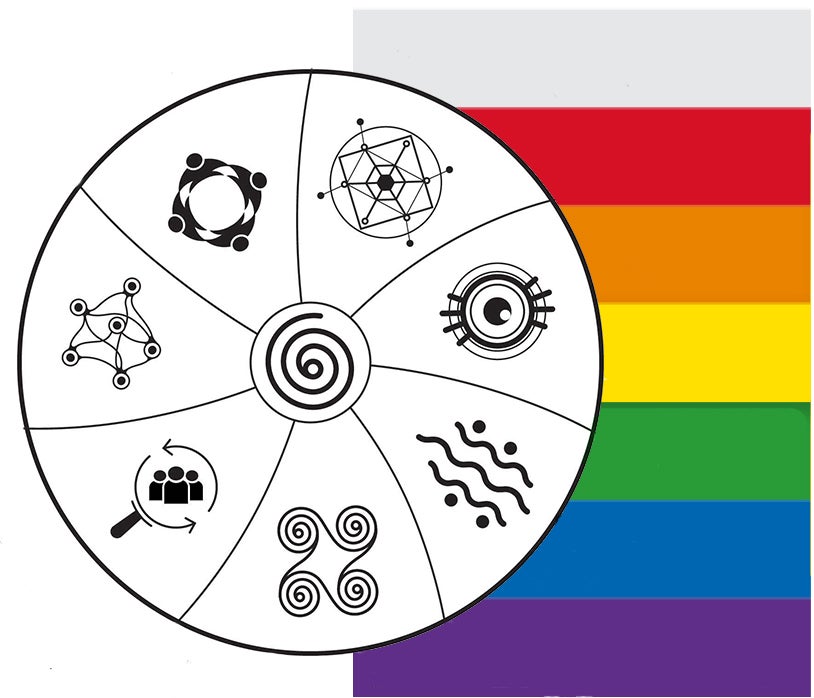Resources
This Terms of Reference (ToR) outlines the basis for the phased theory-based evaluation of the ‘She Can’ project.
She Can aims to tackle violence against women and girls (VAWG) in public spaces within urban areas in four countries and promote women’s rights to the city. Although the final implementation plan was scaled-back due to resource constraints, the TOR itself is a good example of how an evaluation can be planned to be undertaken over the life-cycle of the project, using action research to develop and test the project’s theory of change.
The following information was provided to BetterEvaluation by Jessica Noske-Turner as part of the Evaluating C4D Resource Hub.
The Evaluating C4D Resource Hub sits within BetterEvaluation and houses a growing collection of the available guides, toolkits, tools and methods to use for research monitoring and evaluation (R,M&E) of Communication for Development (C4D) initiatives. The Hub is structured around two combined frameworks:

C4D Evaluation Framework (represented by the circle) is an approach. It describes the values and principles that guide our decisions in C4D.
The BetterEvaluation Rainbow Framework (represented by the rainbows) is a structure. It organises the practical tasks into seven categories or 'clusters' and provides options.
While the resource recommendation below discusses the resource specifically in relation to its usefulness for evaluating C4D within the Evaluating C4D Resource Hub's C4D Framework, this resource may also be of use for people working in other contexts and with different frameworks.
Authors and their affiliation
ActionAid
Key features
The ToR specifically stated its intention to undertake a phased evaluation approach that progressively tests and refines the theory of change of the intervention applying a theory based evaluation approach with programme implementers. In this way, it sets out the expectations for evaluators very clearly in terms of the timeframe and participatory and inclusive approaches to be used.
How have you used or intend on using this resource?
This example has been identified as part of a research project in collaboration with UNICEF C4D. It was identified as a unique example of how an action research/evaluation initiative implemented by external evaluators can be implemented over the full project cycle to enable an integrated, learning-based approach, and how this can be represented in a TOR. Although the term 'C4D' is not used in this TOR, the activities include campaigns, mobilisation, coalition building, and women's groups and school clubs: all relevant to C4D.
Why would you recommend it to other people?
The approach and the TOR are consistent with the C4D Evaluation Framework in relation to this task in the following ways:
- Complex: the use of the phased process allows for an adaptive approach to developing and reflecting upon the Theory of Change. In the third and final phase the theory of change is used for a theory-based evaluation to unpack change processes.
- Learning-based: building on the phased, adaptive, and learning-based process above where findings are built into the change theory and implementation over time, the users (specified on page 9) are the program staff and partners who will use the findings to improve implementation, the 'beneficiaries' who will use it to better understand effective strategies for change, and DFID who are interested from a policy point of view.
- Participatory: this TOR is an example of how an external evaluator can work with program staff to develop and refine a theory of change. The description on pages 5-6 shows clearly the way the consultant is expected to work in partnership with program teams and other stakeholders, and the governance structures outlined on page 9 point to the inclusion of stakeholders and partners.
- Realistic: The TOR directly addresses this by stating that the evaluation design must be proportionate to the scale and scope of the project, and should seek to minimise the burden on project and partner field staff in particular' (page 8).
Sources
ActionAid. (July 2015). Terms of Reference for the action research and evaluation of ‘She Can’. Available at: https://evaluatingc4d-evaluatingc4d.pbworks.com/w/file/113509342/she_can_joint_evaluation_terms_of_reference_final.pdf (Accessed: 24 April 2017).
'Terms of reference for an action research approach to evaluation of She Can project - ActionAid' is referenced in:
Framework/Guide
- Communication for Development (C4D) :
- Communication for Development (C4D) :
- Communication for Development (C4D) :
- Communication for Development (C4D) :